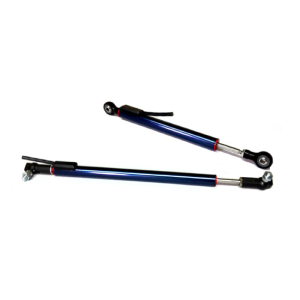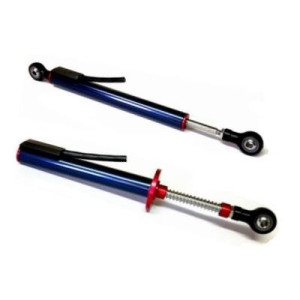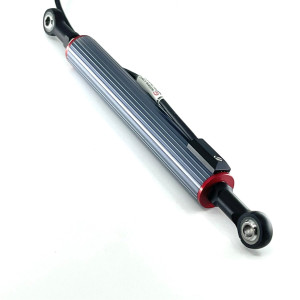Linear Potentiometers

Lightweight linear potentiometer

Lightweight spring return linear pot

Compact linear potentiometer

Compact spring return linear pot

Square linear pot

Heavy duty linear pot

MS-19SRA Spring return linear pot

Linear Potentiometer accessories
Linear potentiometers, also known as linear pots or linear position sensors, are among the most widely used devices for measuring linear position. Known for their simplicity, they offer infinite resolution, output proportional to stroke length, and exceptional durability compared to other measurement devices. Not all linear potentiometers are created equal. Our linear pots are designed with unique features to ensure a long, trouble-free lifespan, even in the harshest environments, from motorsport applications to structural monitoring. Whether you're measuring linear position or displacement in manufacturing, process equipment, or industrial systems, our products deliver unmatched performance.
We offer a variety of options to meet your needs, including: 4-20mA output for precise signal transmission, Front or rear cable exit configurations, Ingress protection ratings of IP65 and IP67, Spring return versions for added functionality, Rod ends and pop flanges for flexible mounting solutions.
Our linear potentiometers provide the reliability and versatility you need across a wide range of applications.
Our experts can help you select the right linear potentiometer for your specific requirements.
A linear potentiometer is a type of sensor used to measure displacement (length) along a single axis. They can be mounted vertically or horizontally as the application demands. Linear potentiometers have an internal shaft with a wiper blade which slides over a conductive track creating a potential divider.
Linear potentiometers can be used in many applications including motor sport for suspension travel, Automotive road load data (RLD), Medical, Robotics, Mobile vehicles and Civil/Structural measurements.
Both sensor types have a potentiometric output. Linear potentiometers measure linearly along a single axis (Straight line) whereas Rotary potentiometers measure rotational movement.
A linear potentiometer is a length of resistive track which when connected to a power source acts as a variable potential divider using a wiper contact which is moved along the resistive track. In most cases the resistance is in the region of 1000 to 10000 ohms and is made from conductive plastic or printed conductive ink. Some high-power linear potentiometers are made from a cylinder with a thin wire wound around it which can dissipate more heat than a conductive plastic device.
The connection of the linear potentiometer is always for the negative and positive power supply to be connected either end of the track, and the output to be taken from the wiper connection which will give a voltage output proportional to the position of the wiper between the two ends.
A linear potentiometer is made with a resistive track that is the same uniformity along the full length. This allows the change of signal to be linear in proportion to the position of the wiper from end to end. A logarithmic potentiometer has a varying resistance of track along the length causing a more rapid change at one end compared to the rate of change for the same distance at the other end.
Linear potentiometers are used for measuring lengths and for applications requiring a proportional output to distance moved, however logarithmic potentiometers are used where a rapid change is required at the start or the end of the movement and a smaller change in signal the further the distance travelled. Logarithmic potentiometers are more commonly found in audio, motor, or lighting control applications where linear potentiometers are found in measurement applications.